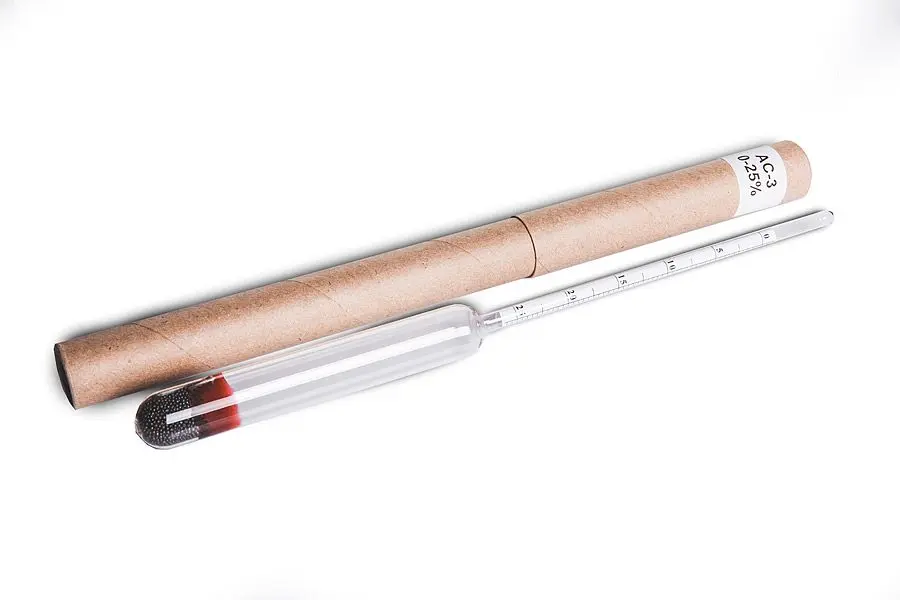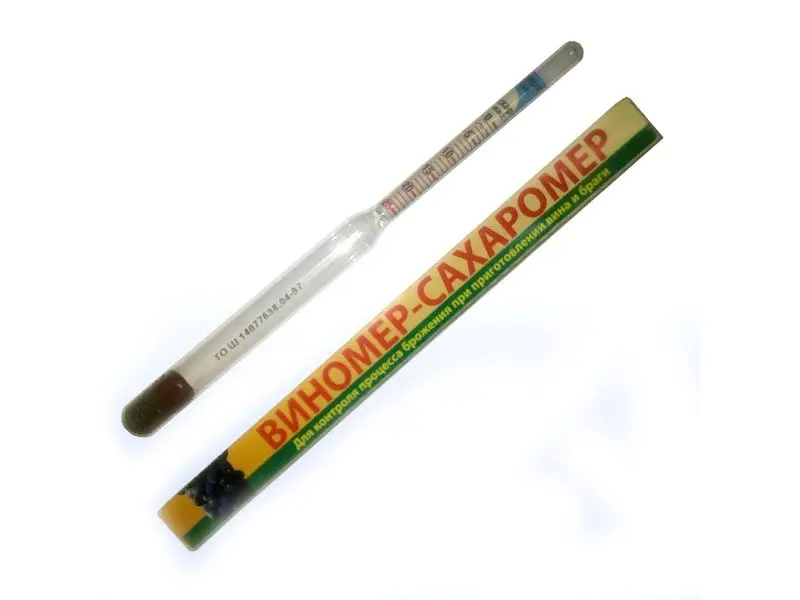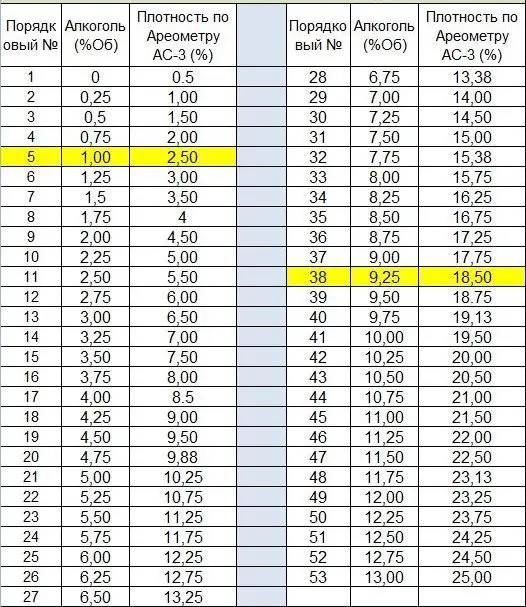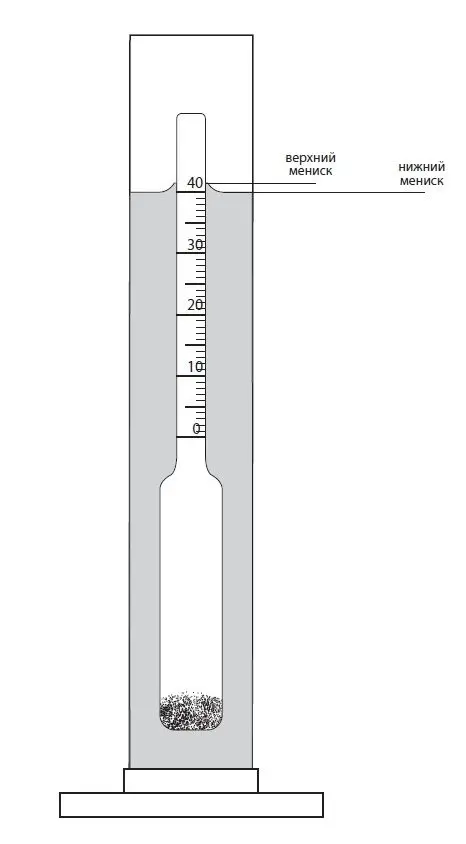Contents
A saccharometer (a hydrometer for determining the concentration of sugar) is a device that makes life easier for moonshiners and winemakers, as well as for brewers, because it makes it possible to control the sugar content in the wort, which in turn allows you to make drinks with a predetermined strength and density. Having a sugar meter in the arsenal of a home distiller is optional, but highly desirable, and for brewers it is one of the most important devices for sticking to the chosen recipe (style) of beer. Often, a saccharometer is bought by those who decide to engage in the preparation of alcohol more or less constantly.
Principle of operation
All hydrometers, including the saccharometer and vinomer, work on the basis of the hydrostatic law (the law of Archimedes), according to which the buoyancy force is equal to the weight of the displaced liquid, which means that the volume of the immersed body is equal to the volume of the liquid displaced by it. Since the densities of liquids are different, the same body is immersed in them to different depths.
A saccharometer (vinomer) is a glass tube, the lower (wide) part of which is filled with mercury or shot to create the required mass, and the upper (narrow) part of the tube has a scale with a gradation of the density of the solution or the concentration of the substance being measured.
The vinomer differs from the saccharometer only in the presence of another scale that shows the strength (concentration of ethyl alcohol) in the wort. But due to their versatility and small size, the accuracy of domestic wine meters is often lower than that of saccharometers. At the same time, knowing the initial density of the wort, it is not a problem to determine the strength with a saccharometer at any stage of fermentation.
Types of household hydrometers
In home distillation, 2 types of hydrometers are common:
Saccharometer AS-3 – designed to measure the concentration of sugar in aqueous solutions by weight of dry matter. It is the most accurate household appliance. To determine the strength, it is required to compare the result with tabular values and carry out calculations.

Measuring range: 0-25%.
Scale division value: 0,5%.
Limit of error: ±0,5.
A household wine meter is a device for determining the sugar content and strength of mash, wine or beer. It has two scales applied on different sides, which allows you to simultaneously find out the sugar content and the strength of the wort without calculations. The disadvantage is lower accuracy compared to AC-3.

Measuring range: the first scale – 0-25% (for sugar), the second scale – 0-12% (for alcohol).
Scale division value: 1%.
Margin of error: ±1-2% for sugar and ±2-3% for alcohol.
How to use a sugar meter and wine meter
It is correct to measure the initial and final density of the wort, since on the basis of the obtained difference it is possible to draw a conclusion about the nature of fermentation (ended or not) and the strength of the drink.
Initial density – sugar content before fermentation. Measured before adding yeast. The recommended values depend on the type of drink.
The optimal sugar content in mash before fermentation is 18-20%, in the case of alcohol yeast – 20-30%.
The initial gravity of the wine is 10-31%, while remembering that most strains of wine yeast can completely ferment juice with a maximum of 20% sugar content (12% of the final strength), and the remaining sugar will not be processed and will determine the type of wine (dry, semi-sweet, sweet etc.).
The initial density of beer depends on the variety, this figure is in the range of 5-18% (for most varieties popular in Russia – 11-12%).
Final density – the sugar content in the wort after fermentation.
If the readings do not change within 24-48 hours and are below 2-2,5% sugar, fermentation is considered complete.
How to calculate the fortress on a sugar meter
To determine the strength with a saccharometer, you need to convert the readings of the initial and final density into units of alcohol according to the table (see figure), then subtract the final value from the initial value.

For example, if the initial gravity is 18,5%, then this corresponds to 9,25% alcohol according to the table, and for the final gravity of the wort of 2,5%, the equivalent strength is 1%. The final strength of the drink u9,25d 1 – 8,25 uXNUMXd XNUMX% vol.
Measurement instructions
1. Fill the measuring container (flask, cylinder or beaker) with enough wort at +20 °C. When measuring the final density, agitate the liquid slightly to get rid of carbon dioxide residues that reduce the accuracy of measurements.
Attention! Due to non-compliance with the temperature, an error of up to 7% is possible!
2. Wipe the hydrometer with a clean, dry cloth. Before diving, the instrument must be completely dry.
3. Gently immerse the saccharometer (vinomer) with the lower part into the liquid.
The device must not touch the walls and bottom of the vessel.
4. Wait until the hydrometer stabilizes at the same level.
5. Take readings. Position the eyes just below the liquid level so that the elliptical base of the meniscus is clearly visible, then slowly raise the head until the ellipse becomes a straight line.
Depending on the design, the values are taken from the upper or lower edge of the meniscus (this moment is necessarily described in the instructions for a particular model).

6. Remove the saccharometer (vinomer) from the flask, wipe it dry and put it in the original storage case. At least once every couple of months, check the readings and calibrate the device if necessary.
Checking and calibrating the hydrometer
To check the saccharometer or wine meter, it is enough to lower the device into distilled water at a temperature of +20 °C. When working correctly, a zero value should appear (on the vinomer sugar scale).
If the hydrometer floats too high, increase its mass by applying nail polish or tape to the top of the glass tube until the scale returns to zero.
If the saccharometer (vinomer) sinks excessively, it is necessary to reduce its mass by shaving off part of the glass at the top of the tube with a blade.









